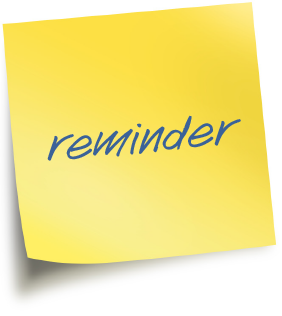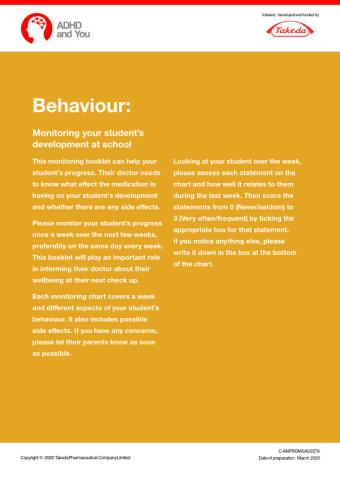Learning, behaviour and socialisation
 The three key elements of teaching and managing students with ADHD concern systems, strategies and solutions in aspects of:
The three key elements of teaching and managing students with ADHD concern systems, strategies and solutions in aspects of:
- Learning
- Behaviour
- Socialisation
The following approaches can go a long way to maximising students’ potential.
Learning
Set the right tone
The way a teacher reacts to any student can strongly affect the way other classmates behave towards them. Although you may be very frustrated at times, it is best to try to show patience and tolerance. There’s a greater chance that the whole class will follow your example, making the student with ADHD feel less isolated.
How can we improve their skills?
With a differentiated approach to teaching and learning, you can help the student with ADHD who may be having difficulty with basic academic skills. The important thing is to help them organise their thoughts and to be aware of what is expected of them.
In order to do this the two key attributes are:
- Structure
- Flexibility
Developing structure
Students with ADHD feel safe and secure if they know what to expect. With regular routines and rituals, they become more familiar with what they need to do. The more you can keep to routines and rituals, the better. Any change simply creates distraction, uncertainty and confusion.
How do we help them organise their thoughts?
A major problem facing students with ADHD is that they have problems expressing their thoughts verbally and on paper. They may also do things in the wrong order. Getting students with ADHD to learn how to develop a sequence of events in the right order will bring about real improvements in their academic performance.
 One teacher talking about a student with ADHD said that “He is like a computer without the printer attached. He knows the answer in his head, but he can’t give me the hard copy by writing it down on paper.”
One teacher talking about a student with ADHD said that “He is like a computer without the printer attached. He knows the answer in his head, but he can’t give me the hard copy by writing it down on paper.”
A fun way of doing this is to ask the student to describe the sequence of events involved in various everyday activities; for example, you could ask them to explain step by step, how to clean their teeth, run a bath or play a computer game. You could also ask them to describe things in 30 seconds – like a day at school, their home or their favourite video.
Getting students organised
Developing a sequence of events is important so students can learn how to get organised. They need to understand that things are meant to happen in a certain order. Always begin with a simple overview of what you want them to achieve. Then create a framework with simple steps so that the student knows what is meant to happen next. For some students it helps them to say out loud what they are about to do next.
Supporting memory weaknesses
- Encourage your student to connect information or concepts being presented; for example, they’re more likely to remember that someone who had six wives and was a famous English King and is called Henry is a Horrid Henry, as in the book series when they think of them
- Mnemonics can also be useful for remembering important facts
- Repeat directions individually
- Use visual maps
- Colour code their homework diary
- Use flash cards
 Make reminders and lists – Post-it notes®, student diaries and taping instructions to their book bags can all serve as memory prompts. With adolescents it’s a good idea to plan things with them in advance. You can also help them draw up a checklist of things to do. As they grow older, lists can make their lives easier
Make reminders and lists – Post-it notes®, student diaries and taping instructions to their book bags can all serve as memory prompts. With adolescents it’s a good idea to plan things with them in advance. You can also help them draw up a checklist of things to do. As they grow older, lists can make their lives easier
Useful classroom strategies
There are a number of strategies that you can use in the classroom to help improve the performance of students with ADHD. Obviously, how much you can do, will be restricted by the resources at your disposal, the size and nature of the classroom, the demands of the curriculum and the rest of the class, and the age of your students.
Where should we seat them?
Students with ADHD tend to get overstimulated when working in group situations. Try the following:
- Pair them with less distractible students who are likely to follow the teacher’s instructions
- Seat them near the front of the classroom away from doors, windows and other distractions or in an area of the room which may be more suitable
- It is often better to have them either sit at a single desk or at most a paired desk within the main classroom
- There should also be another area or workstation set up facing the wall and away from the main classroom area where they can learn as needed
Giving previews
It is worth trying to give students with ADHD a preview of what is going to happen in tasks, projects and lessons. This will prepare them in advance of what will be expected of them and prevent them from feelings of uncertainty and insecurity.
Keeping them focussed
As students with ADHD get bored easily, it is important to try and keep your educational content stimulating and varied.
Also try to change your tone of voice and your pace of teaching presentations.
Students with ADHD tend to respond better to concrete learning experiences. They often have high levels of creativity and welcome the chance to learn independently.
Encourage them to tell you if they do not understand what they are meant to be doing. The key is to reinforce the instructions as many times as possible and to remain positive at all times.
Are there typical classroom problems?
There are a number of typical problems facing the teachers of students with ADHD.
Here are some techniques for dealing with them.
Walking around the classroom
- Instead of trying to get students with excessive motor activity to remain still, find them opportunities for regular seat breaks
- If something needs to be written on the whiteboard, ask them to do it
- Give them a job or task that allows them to be active in a controlled way during the lesson
Dealing with impulsiveness
- As students with ADHD tend to act first and think afterwards, they may need help in processing their thoughts before responding
Encouraging attention
- Provide students with a brief outline of the lesson at the beginning

- During the lesson, try to include a variety of activities
- Break everything into short chunks
- In some cases, it can help to have non-vocal music playing either in the background or through a headset device
- Reduce expectations of written work and use alternative ways of recording information
- Review design of worksheets and tests
- Present only one or two activities per page
- Avoid unnecessary pictures or visual stimuli
- Give prompts
- Provide alternative environments for tests and exams
- If attention seems to be waning, use special cue phrases to stimulate interest. Attention grabbers include “Right, here we go;” “Wait for it;” “Now for the interesting bit;” “The next clip is amazing;” and “We’re nearly there now”
Learning to do things in three stages
 Stop and listen
Stop and listen- Look and think
- Decide and do
You can help students with ADHD by practising these processes with them.
Take everyday situations stage by stage. It may help to get the student to verbalise everything they need to do.
Calling out in class
Calling out and making inappropriate comments are common signs of impulsiveness. You may need to remind the whole class that doing this is unacceptable. If the student with ADHD continues to call out, don’t address the student personally. Instead address the problem in general terms. You might say: “It makes things very difficult when people call out and interrupt me when I am talking.” If you are running a reward scheme, establish a private signal in advance with the student so that they know that this sort of development will not win points. The signal could be something like visually tapping the reward card or some other pre-agreed sign.

Encouraging better organisation
Students with ADHD typically have problems organising themselves and so they really need help with study skills:
- For daily routines, stick a timetable to their desk
- When they are working on projects, draw up a checklist to ensure every point is covered
- To avoid confusion, don’t give them more than one assignment at a time
- Overall, concentrate on teaching them not what to learn, but how to learn it
Helping students to settle
It takes time for students with ADHD to settle in different places. It can be difficult for them to wind down, especially after break time. Going from the relative calm of the classroom to the playground and back again can be quite difficult for students with ADHD to manage.
After a break, they may need to settle down for a few minutes before focusing on specific tasks. In some cases, it is a good idea to ask them to come back 2 minutes before the end of break to help settle them before the next class. Changes to daily routines are also unsettling. If there is going to be a change, explain what’s going to happen in advance.
Dealing with fidgeting
 It’s hard to stop students with ADHD fiddling and fidgeting but it is helpful to be proactive rather than reactive to this. It is a good idea to give them something to fiddle with, such as spinners*, squeezable balls, tangle toys or small building blocks.
It’s hard to stop students with ADHD fiddling and fidgeting but it is helpful to be proactive rather than reactive to this. It is a good idea to give them something to fiddle with, such as spinners*, squeezable balls, tangle toys or small building blocks.
*If allowed in your school
Tips for learning and homework
 It takes a student with ADHD about three times as long to do the same assignment in the home environment in comparison with the school setting.
It takes a student with ADHD about three times as long to do the same assignment in the home environment in comparison with the school setting.
With this in mind it is recommended that the following options should be considered for students with ADHD regarding homework:
- Can homework be reduced or differentiated to that which is essential? Is the homework really necessary and if so can the amount or style be adapted for the student with ADHD? Perhaps more one-word answers than essays or multiple choice answers for maths
- Can bonus points be provided for doing more? In some cases, it will be necessary to have extended assignments and in this case can the school provide extra incentives for a student with ADHD to complete the task, as this arrangement can help to provide additional focus to task
- Could there be ways of reducing writing requirements to that which is essential by using information technology? Writing tends to be a difficult skill for many students with ADHD. Providing another option for getting thoughts on to paper will be necessary. Encourage the use of technology to assist the homework process
- Can students stay at school to finish homework or complete it during the day? It may be more productive to have the student complete homework tasks at school where there will be more structure and fewer distractions
- Can parents be allowed to be a ‘parent secretary’ for students with handwriting difficulties? In some cases, technology will not be appropriate and so if writing is a problem then look to use the parent to write down the thoughts of the student, but obviously not to do the work for them
Overall, bear in mind that homework sometimes can be a ‘bridge too far’ for some students with ADHD and so the main factors are to try to reduce the burden of homework away from the student and family as much as possible.
Behaviour
ADHD as an explanation, not an excuse!
The emphasis should be firmly placed on recognising where problems exist and finding ways to solve them. The approach should be solution focussed and on missed opportunities for effective learning and development.
How can we get better development?
Students with ADHD do not have a problem with knowing what to do but rather a problem in doing what they know. As a result, they need lots of praise and encouragement. Once they feel you understand their difficulties, they’ll be more likely to work with you rather than against you.
Getting the message over loud and clear
You will often need to address students with ADHD in the clearest possible way.
Here are some examples:
 Always address the student by name
Always address the student by name- Keep all instructions short and simple e.g. “Pick up your books please”
- Try to make eye contact wherever possible
- Speak clearly and concisely, and maintain an even tone
- Don’t ask why, say (for example) “What should you be doing now?”
- Also use when, then and either or; for example, “Nathan, when you have put the book away, then you can have a drink” or “When you have put the chair under the table, then you can go”
- Then give your instructions in a simple step-by-step way, pausing between each step and perhaps giving them the chance to do each activity
Tell them they are good
Praise improves concentration skills in students with ADHD. When they do something well, tell them how pleased you are that they’ve done it. Praise in specific terms rather than generally, e.g. “That was a really interesting story with an exciting ending” rather than “Well done.” If they have behaved well during a lesson, say so but be precise about what they did when and where. Always remember to praise effort rather than ability.
Setting up a reward scheme
Rewards change behaviour and students with ADHD respond very well to incentives tied to short-term targets.
- Agree certain achievable targets such as sitting still for 10 minutes
- Negotiate rewards with the student and vary them regularly to keep up the interest
- Make sure the rewards are age appropriate
Types of reward schemes
 Stickers and/or points
Stickers and/or points- A certificate of merit or acknowledgement from the head teacher at assembly
- Additional computer time
- A choice of activity
- Free time
Try to catch them being good and take every chance to help the student recognise their achievement. Reward schemes could be used by any member of staff who works with the student. But remember it’s not just the reward that matters, it is often who gives the reward.
Building on success
Usually there is something that students with ADHD do well. They may be good at painting, singing, swimming or computer games. Make your student feel he/she has a real talent. Create a feeling of success and it will boost confidence. Nothing succeeds like success.
Dealing with challenging development
Although you need some degree of flexibility in dealing with students with ADHD you will often still need to address challenging development. However annoying they have been, it is important to make sure the student feels that it is his/her poor behaviour that you do not appreciate and not the student personally, as students with ADHD may be hypersensitive in these situations.
Rules and responsibilities
Many students with ADHD do not actually understand what is expected of them in terms of behaviour. So, it may be helpful to sit down with the student to explain the issues specifically. Draw up a list of specific rules and responsibilities to address particular problems. Be crystal clear on what is and what is not acceptable.
What about discipline?
Students with ADHD often feel that they are being picked on.
- Be specific with discipline. It’s best to tell them what they should be doing rather than what they shouldn’t; for example instead of saying “Liam, can you stop talking and bothering Sadie?” say “Liam, please listen to me and finish the writing in your book”
- When you impose sanctions, it’s helpful to remind the student that poor development will have a consequence; remember it is never the severity, but the certainty, if you say it you must follow through
- Sometimes dig for empathy; for example, if the student has knocked a pot of paint over a classmate, you could say: “I’m so upset/disappointed that this paint has gone all over Emma and caused such a mess on the floor”
Remind students in specific terms
Students with ADHD may simply not be doing what you’ve asked because they have forgotten the specific task. Instead of telling them in broad terms to get on with their work, remind them of the actual specific task.
Dealing with outbursts
Students with ADHD can have explosive outbursts. When things go wrong they may feel very frustrated and take it out on those around them. When the rage subsides, they feel even more frustrated with themselves. Be calm, try not to show any emotion and show the student that you are in charge of the situation.
Time out or take a break
There will be occasions when the student is so unruly and awkward that they need to have time away from other students. The idea of taking time out or taking a break is to have a stimuli-free place, perhaps a quiet corner in the classroom where the student goes for a short period of time. This should not exceed a time span which is more in minutes than the age of the student; e.g. if the student is 5 years old 5 minutes should suffice. This place could be called the ‘thinking space’ or ‘the time away corner’. This technique can also be used with older students to create some head space.
Allow no conversation or involvement while the student is there. When the time is up, move on with the lesson and do not refer to the recent issue. The slate is clean. It’s important that you welcome the student back into the class with warmth and carry on as usual. You could also suggest the student goes to the ‘thinking space’ if they feel they need to.
Tips for behaviour
 Oppositional Defiant Disorder (ODD) is a term given to describe when a student displays a certain pattern of behaviours that includes losing their temper frequently, defying adults, being easily annoyed and deliberately annoying others.
Oppositional Defiant Disorder (ODD) is a term given to describe when a student displays a certain pattern of behaviours that includes losing their temper frequently, defying adults, being easily annoyed and deliberately annoying others.
The key elements displayed by students with ODD include the following:
 Argues with adults
Argues with adults- Refuses and defies
- Is angry and defensive
- Is spiteful and vindictive
Students with ODD are often very challenging individuals – here are some key tips to help you:
- Have clear expectations of academic and development targets and agreed rewards and consequences
- Make sure they are clear that they are responsible for their actions no matter that “she started it,” “I’m tired,” etc.
- Be consistent in your approach and handle disruptions with a response that includes no emotion and not too much talking. Consider non-aggressive body language and offer the student an escape hatch to calm down
- Catch them doing it right. Praise to correction of behaviour in a 4:1 ratio
- Sometimes look for a draw. Let very defiant students save face by providing them with two options where either one is ok with you
- Know that your job is to set boundaries and that discipline means being prepared to make unpopular decisions
- Use assertiveness as opposed to aggressiveness but eliminate sarcasm and other forms of put downs
- Don’t ask “Why?” ask “What?”; “What should you be doing now?” and use either/or and when/then “Lewis either put the phone in your bag or on my desk;” “Sheena when you have put the chair back under the table then you can go”
- If it’s not working in class get to know them better. ‘Everybody has a price’ and ‘everybody listens to someone.’
- Find out what motivates them and who has influence with them
- It’s not behaviour management, it’s mood management – their mood, your mood and the mood of others. Analyse your own mood and don’t take it personally
Socialisation
How should we approach ADHD?
A diagnosis of ADHD can be an opportunity for teachers, students and parents to start again and build a better relationship. As with all good relationships, the keys are to understand the needs of others and to recognise the problems that they face.
 When people understand that ADHD is not an excuse but an explanation of why the student behaves in a different way, this provides an opportunity to develop new methods for improved learning and development. This co-operative effort between teachers, parents and all concerned with the welfare of the student will be of great benefit, when old attitudes of ‘them’ and ‘us’ become ‘we.’
When people understand that ADHD is not an excuse but an explanation of why the student behaves in a different way, this provides an opportunity to develop new methods for improved learning and development. This co-operative effort between teachers, parents and all concerned with the welfare of the student will be of great benefit, when old attitudes of ‘them’ and ‘us’ become ‘we.’
How do we deal with difficulties with peers inside and outside the classroom?
Students with ADHD are easy to distract and often overreact to teasing and bullying.
Try to help them not to respond to teasing and make sure that other students are aware that they may be more sensitive to this type of development than other students in the class. It may help to structure break time and lunch by having inside activities and clubs that students with ADHD may attend across the age range. Rituals for learning and praising students with ADHD frequently in class may help raise their general levels of self-esteem and make them less vulnerable. If possible set them up with a ‘buddy’ or peer mentor, ideally from an older class, who can help to support them especially during breaks and lunchtimes. Try to involve them proactively in games and activities with close supervision and support from conflict.
Building bridges with the student and parents
Having ADHD is not about ‘shame or blame’ but that there is a medical reason for the student’s performance and development. No one is at fault, neither the student nor parents. As a result:
- Try to assure both parents and student that you have an understanding of the issues of ADHD
- Inform all colleagues, support staff and lunch assistants of the student’s difficulties so that everyone can prepare and adopt a consistent approach; this is an opportunity to have a fresh start and for everyone to be proactive rather than reactive
- Try talking regularly with the parents and the student, to let them feel you are concerned about how they are feeling and coping
How is ADHD treated?
Management of students with ADHD may involve the following:
- Parent training/education programme – a structured training programme with developmental strategies to improve parenting skills in order to manage your student’s challenging behaviour
- Educational interventions and support at school
- Psychological treatment to help your student cope with his/her feelings and development
- Social skills training – teaching people to be more socially aware in their relationships with other people
- Medication is also available to treat ADHD
NICE (National Institute for Health and Care Excellence) is the independent organisation responsible for providing national guidance on the promotion of good health and the prevention and treatment of ill health. They have produced national guidelines which recommend medication to be used when ADHD symptoms are still causing a persistent significant impairment in at least one domain (e.g. home, school, etc.) after environmental modifications (i.e. changes that are made to the physical environment to minimise the impact of a person’s ADHD on their day-to-day life) have been implemented.
Medication may be a valuable addition to help students concentrate, learn and manage the core symptoms of ADHD; inattention, hyperactivity and impulsivity. When medication is required, most students with ADHD respond well but medication should only be used as part of a wide range of psychological, educational and developmental therapies.
A child and adolescent psychiatrist or paediatrician can assess if medication is appropriate. Dietary fatty acids supplements are not recommended for the treatment of ADHD. Medication is not recommended for pre-school children.
Developmental Parent Training is recommended for parents of students with symptoms of ADHD or Hyperkinetic Disorder.
What kinds of medication are available to treat ADHD?
There are two types of medications – stimulant and non-stimulant – that are recommended as options for the treatment of ADHD. The dose of medication will be tailored to the student’s needs and may change as they get older, depending on their response and any side effects.
Why is taking medication important?
To ensure that your student receives the full benefit of their medication, it is important that it is taken as prescribed. Some medications are taken before school and their effects last for the whole school day. Other medications last for a shorter amount of time and will have to be taken during the school day.
It is important to address any issues around taking medication at school to ensure that they do not miss a dose for any reason. The student’s doctor or parents will explain the dosing regimen and appreciate your cooperation in ensuring your student takes the medication.
Why is monitoring important?
It is important that student progress is monitored when they start treatment for their ADHD. The student’s doctor will want to monitor not only their development and learning and whether their treatment is working, but also whether they are experiencing any side effects if they are taking medication.
The student’s parents may give you a monitoring booklet and ask you to complete it at school. It’s very straightforward. The HCP will need to see this, so that treatment can be adjusted if necessary. Any medication that is recommended by your student’s HCP has the potential to cause side effects. These can be different in each student. It is important that your student’s HCP is aware of any changes that occur, once they start taking their medication. So please try to keep a record of anything you notice at school.
How long does treatment last?
If treatment improves your student’s development, it may be continued for several years as long as it is effective, but this can vary as every student is different. It is recommended for the student’s doctor to review at least annually the clinical need, benefits and side effects of medication, views of the student, parent and teacher and the need for other developmental and psychological therapies. Recent studies suggest that 50–65% of children diagnosed with ADHD continue to have symptoms, and therefore require treatment, into adulthood.
Health and safety
Some students may have to take medication at school – this could mean a supply is kept at school. Some ADHD medications (those that are stimulants) are controlled drugs so they must be kept in a locked container and, like all medications, they must be kept out of reach and sight of children.*
* For more information about keeping drugs at school please read Managing Medicines in Schools (Primary Professional Development) by Joe Harvey
Tips for socialisation and friendship
 Students with ADHD often find it difficult to make and keep friendships. This can be more of a concern to teachers and parents than even academic issues.
Students with ADHD often find it difficult to make and keep friendships. This can be more of a concern to teachers and parents than even academic issues.
Social skills can be difficult for students with ADHD who cannot always wait to take their turn, blurt out inappropriate comments and may be overtly antagonistic and even aggressive. The following ideas may help to improve friendships and peer relations in schools:
- Unstructured break times/lunch times can be tricky parts of the day unless careful thought is given to the amount of free time and groups that students with ADHD have access to. It is a good idea to create options for inside activities and clubs
- Assign a student with ADHD a study buddy and/or peer mentor. Students with ADHD who have difficulties with study skills and socialisation should be assigned another student who could act as an ‘auxiliary organiser’ in the classroom and advocate in the playground. The peer mentor could be rotated on a weekly basis
- Educate the other students about differences in learning styles, such as with ADHD. All students should receive information regarding issues such as Autistic Spectrum Disorder (ASD) and ADHD and how they affect people as part of Personal, Social, Health and Economic Education (PHSE) classes. ‘Circle Time’ is also an opportunity to discuss these issues
- Have specific support and plans for situations such as field trips and sports. Planning for these in advance in terms of proactive supervision, groupings and activities, will prevent situations occurring in terms of proactive supervision, groupings and activities
- Plan groups carefully. Students with ADHD can often do well in 1-to-1 situations so often a group of two is the best arrangement. The other common issue is that students with ADHD often appear to socialise more effectively with older and younger students rather than their peers
- Teach social skills. The issue of helping students recognise the need for impulse control and to listen more effectively does take time but this will pay long-term dividends in the end in terms of helping to forge successful friendships
Resources for download
Useful Links
Patient support organisations
- UKAP – the UK ADHD Partnership – https://www.ukadhd.com
- ADHD Foundation – Schools – https://adhdfoundation.org.uk/
- Young Minds – ADHD and mental health – https://www.youngminds.org.uk/parent/a-z-guide/adhd/
- The National Attention Deficit Information and Support Service (ADDISS) – https://www.addiss.co.uk
- Scottish ADHD coalition – https://www.scottishadhdcoalition.org
Professional organisations
- National Association for Special Educational Needs (NASEN) – https://www.nasen.org.uk
- National Health Service – Overview ADHD – https://www.nhs.uk/conditions/attention-deficit-hyperactivity-disorder-adhd/
- National Institute for Health and Care Excellence (NICE) guideline NG87 – Information for the public – https://www.nice.org.uk/guidance/ng87/informationforpublic
You are now leaving www.adhdandyou.co.uk. You will be re-directed to an external website. Takeda accepts no responsibilty for the content of other websites.




